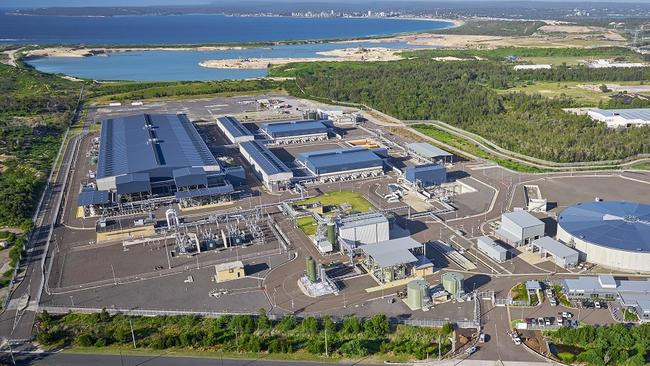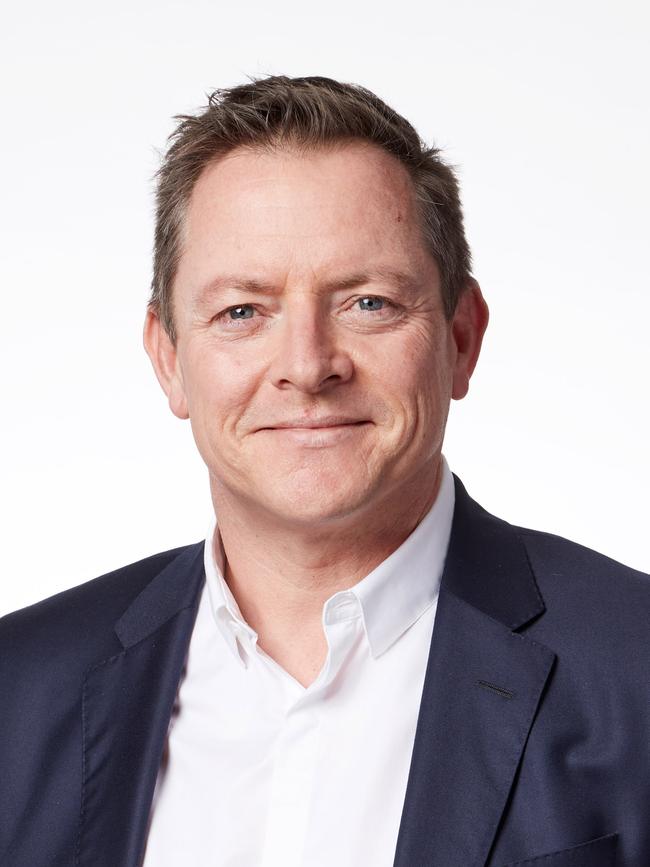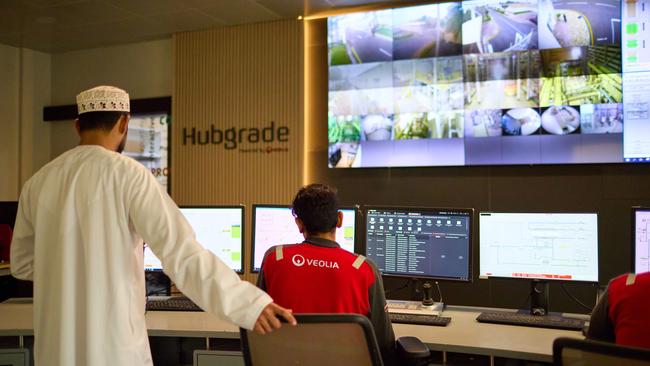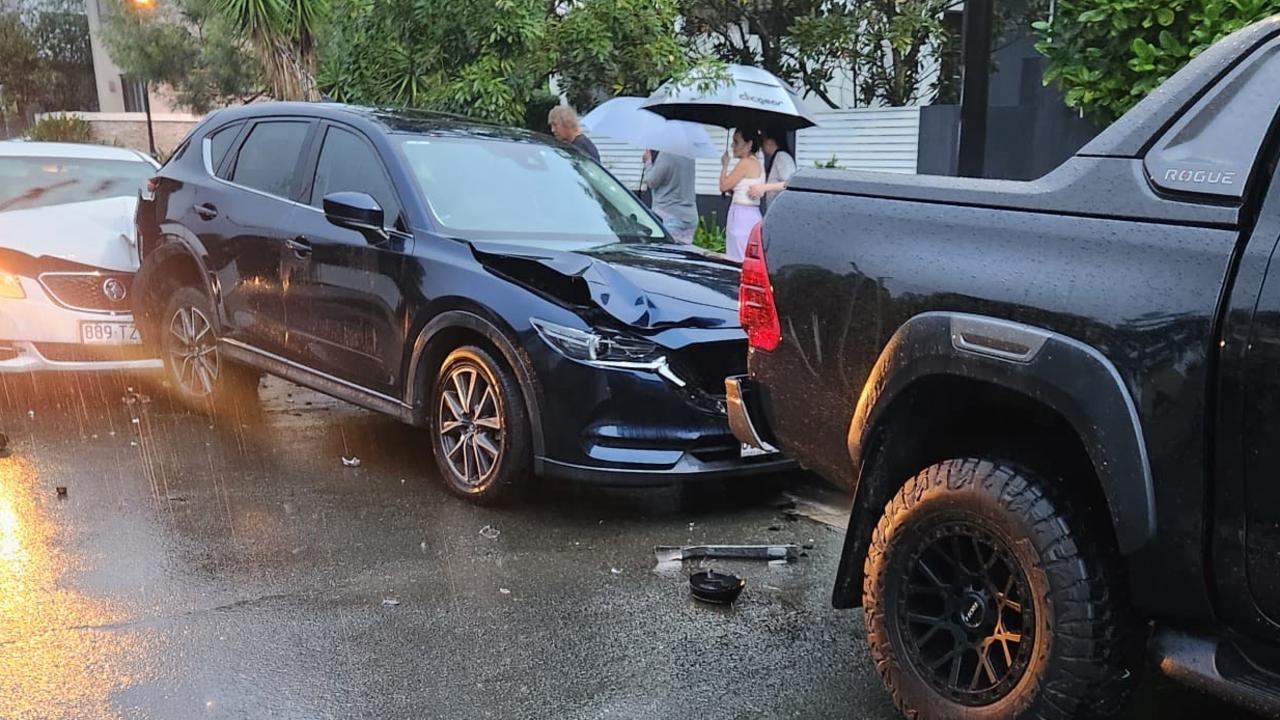Global desalination leader Veolia to double operational capacity in Australia
International sustainability company Veolia says Australia should overhaul its water strategy to confront a climate-driven supply crunch, but surveys show climate denial is on the rise.
QLD News
Don't miss out on the headlines from QLD News. Followed categories will be added to My News.
Australia must urgently invest in desalination and recycled water projects or risk running dry, with global water demand forecast to outweigh supply for five billion people by 2050.
International sustainability company Veolia says Australia should overhaul its water strategy to confront a climate-driven supply crunch.
The company, which operates more than 50 water treatment plants across the country and Sydney and Gold Coast desalination plants, plans to double its operational capacity within the next decade, pinning Australia as one of its top three growth corridors alongside the Middle East and United States.
Veolia chief executive Estelle Brachlianoff said the world was now experiencing a second desalination movement, which she labelled a “lifeline” in the face of increasing weather disasters.
“Water has become the challenge of the century,” she said.
“This is a direct consequence of climate change that we see with water, either too much water, too little water, or not at the right time or not of the right quality and dissemination in that world.
“There is a specific problem with 80 per cent of people living on coasts.”

In the past 12 months alone, Western Australia, Victoria and South Australia faced extreme bushfire seasons, while Queensland faced cyclones and flooding.
March 2025 was Australia’s hottest on record, with national temperatures averaging 2.4C above the norm.
While Queensland experienced its third-wettest March since 1900, southern regions like Adelaide faced severe drought conditions, recording their driest periods since the 1960s.
Despite this, Veolia’s annual survey of public opinion on climate change found 40 per cent of Australians dispute climate change as real and caused by humans — a 6 point jump in 18 months.
While the survey of 1000 Australians showed they were open to or adopting eco-friendly habits, they were also growing more sceptical, mostly among Coalition and One Nation voters and low-income earners.

Veolia Australia and New Zealand chief executive Richard Kirkman said traditional water treatment plants were no longer keeping up with weather disasters and would need to invest in at least six more desalination plants within the next decade.
“We found that we need desalination when it rains a lot, because the rest of the water treatment facilities are overcut with storm water,” he said.
“We’ve got the dams. They’re full at the moment. They won’t always be full, you can’t wait.”
Australia currently has a high per capita water storage capacity, exceeding 3.25 million litres per person.
But Veolia predicts that water demand will increase by at least 50 per cent by 2050 – when Australia’s population is expected to hit 36 million people.
The desalination plant in Sydney’s facility currently supplies 250 million litres of water per day – catering for more than 15 per cent of the city’s drinking water.

The Gold Coast plant, with a desalination capacity of 133 million litres and feeds into Brisbane’s water network during floods.
The plants are set for expansion, doubling their capacity from 250 million litres to 500 million litres (per day).
The company is calling for a trifecta water mix for major cities: one-third from dams, one-third from desal, and one-third from recycled water — a strategy already being explored by Sydney Water.
There is also significant opportunity for investment in recycled water, however, public perception of the technology has delayed this market, despite rising concerns over PFAS contamination.
Australia is also lagging on waste recycling, but Mr Kirkman says this industry could be unlocked if regulatory levers are pulled.
“Increase the landfill price, and then everything will just go elsewhere,” he said.
“It’s quite a good tax for politicians, the tax that no one ever lost government before.”

“There’s no barrier for desalination plants, we just need to do the same for waste, then really, the country will be set up.
“It can genuinely lead the world in these areas.”
Under Veolia’s GreenUp 24–27 strategy, a $100m recycling facility will be built in Canberra, signed as a 20-year PPP contract, capable of processing 1 million tonnes of packaging waste.
On top of scaling up its active desalination plants, the company has also tendered for a major project in South Australia, supplying desalinated water 200km inland to BHP’s Olympic Dam to support expanded copper output.
New modular, energy efficient “Barrel” desalination units that reduce plant footprint by 25 per cent and energy use by 30 per cent are also poised to be rolled out to regional mining areas.

At the core of the company’s Australian strategy is Hubgrade, an artificial intelligence platform that can monitor equipment, predict breakdowns, and even order spare parts while issuing tailored safety procedures to onsite teams.
Artificial intelligence has also been leveraged at the Gold Coast site, where machine learning has improved energy efficiency by 1.1 per cent.
Australia’s desalination plants are already equipped with hi-tech reverse osmosis systems that recover up to 97 per cent of the energy from brine flows.
Veolia holds a commanding 18 per cent share of the world’s desalinated water infrastructure over 108 countries with €45 billion in annual revenue.
It anticipates a long-term sectoral growth of 6–12 per cent annually, driven by urbanisation, climate disruption, and resource scarcity, with a goal to raise a $16bn portfolio through Australian expansion.





